
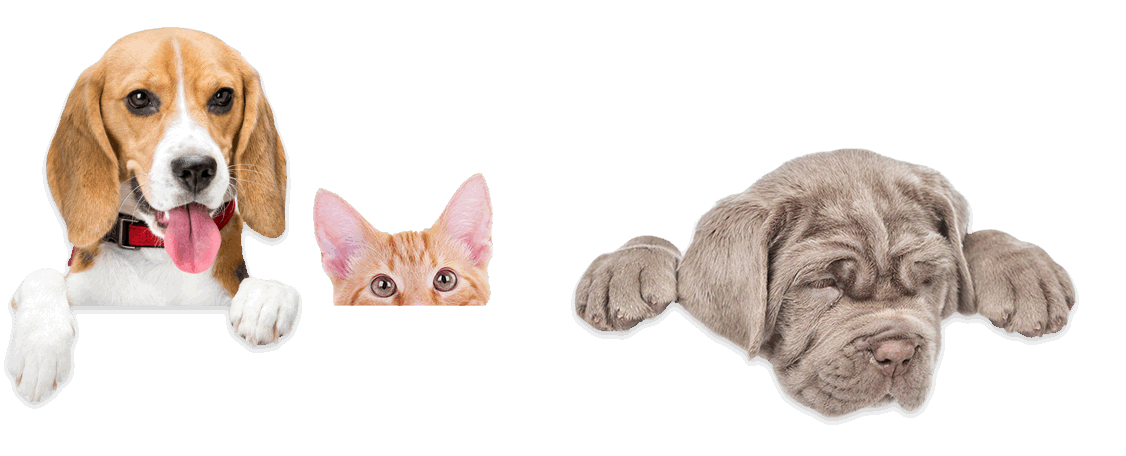
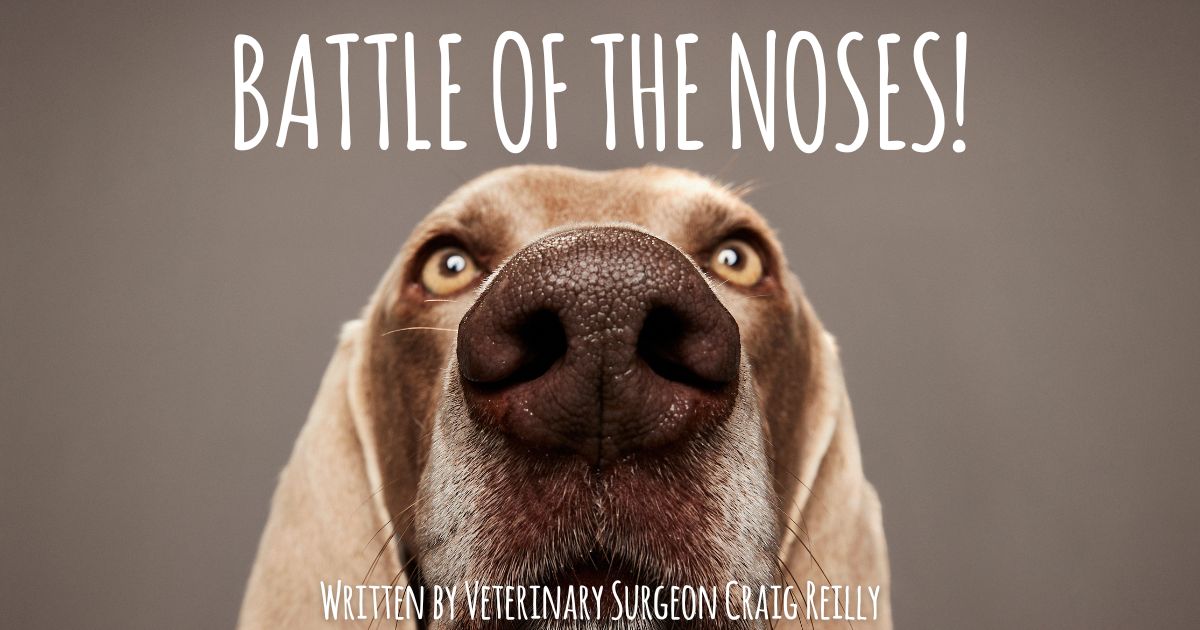
Big or small, our nose allows us to smell our surroundings and helps us taste our food. We all know dogs and cats have a better sense of smell than we do, but did you know just how much better their noses are? Some humans have an exceptional sense of smell: consider technicians trained in perfume factories, or experienced wine-tasters- but how do even they stack up against our pets abilities?
Who has the best sense of smell?
Unfair advantage? Did you know dogs actually have two noses? Some breeds really weren’t hiding behind the door when noses were being given out! Three breeds of dog in particular actually have a genuine double nose – the one European breed with an area of skin dividing the nose in two is called the Pachon Pavarro, a Spanish Hunting Breed. Even dogs without this genuinely divided nose can be said to have two noses though – all dogs (and cats) have an extra organ of smell we don’t have. It is called the Vomero-nasal Organ.
Cats are believed to be up to 40000 times better at detecting odours than their human owners, but it is the dog who is the real Olympic Champion of smells! It has been estimated that dogs can sniff out odours even in amazingly diluted amounts. Scientists estimate that our dogs can detect a single drop of liquid in two Olympic-sized swimming pools! This staggeringly effective sense of smell has recently assisted doctors in detecting Coronavirus in asymptomatic infected humans with the same sensitivity as a Covid-PCR test: quite astounding. Better even than professional perfume smellers!
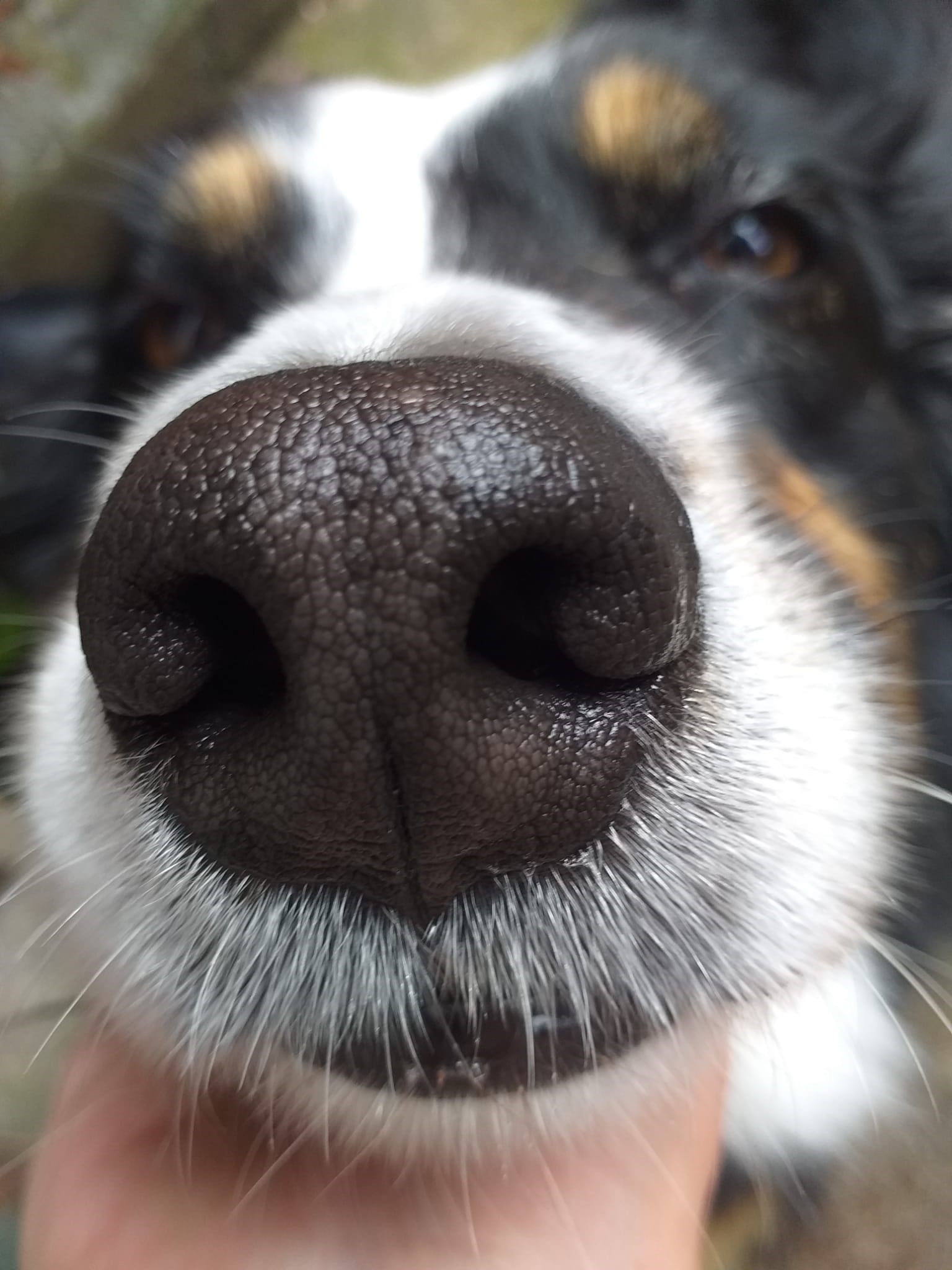
Your dog’s nose is also a heat detector!
The dog nose, like all carnivore’s noses, is usually several degrees colder than a herbivore’s nose (e.g. a cow) and this difference is important in allowing them to detect radiating heat differences, such that they can use their nose almost a as a third eye. Owners of blind dogs often note that their pet can “see” his/her way round the house – this is in part believed to be due to the noses ability to detect both heat and smell, allowing them to map out their surroundings especially well. Dogs tend to hold their nose temperature about 5 degrees cooler than room temperature, which might explain that shock when they touch us with a cool wet nose! At very low ambient temperature the dog nose will feel a bit warmer than the surrounding air, often up to 8 degrees Celsius. So, the old myth about cold/wet noses being healthy isn’t quite accurate – it depends on the ambient temperature whether the nose will feel warm/cold.
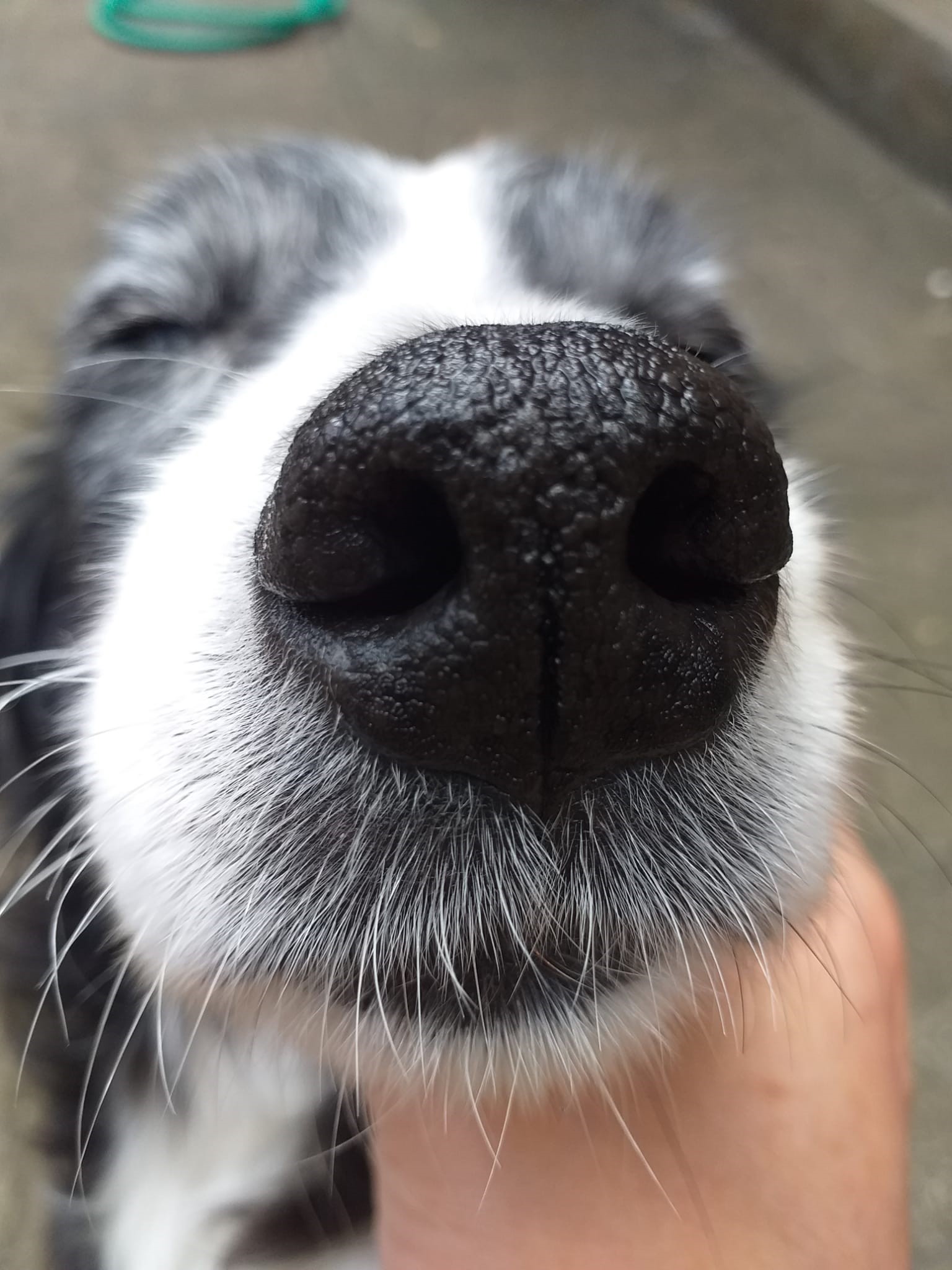
A wet nose is a healthy nose?
Dogs lose heat by panting – so a warm tongue and a damp cool nose is often the “norm” on a warm day. The moisture present on many dog noses helps them smell by collecting more particles for the nasal detection system to identify (like a damp cloth collects more dust that a dry one). The opposite though, having a dry nose, is not necessarily a bad sign, and unless accompanied by a dull, dehydrated or depressed doggy then is very unlikely to signify and ill health or be of any real concern.
Can my dog “see” with his nose?
A dog’s nose has massive numbers of nerve fibres from the trigeminal nerve, and scientists in Sweden and Hungary have recently used advanced MRI scanning technology to identify neurological pathways connecting the nose and the olfactory bulb (area of brain analysing smell) directly with the area of the dog brain analysing vision. It is believed therefore that smell can help dogs map out a genuine 3D image of their surroundings which is truly fantastic: Smell-o-vision?
Let dogs be nosey!
For dogs, smells are a really effective form of communication: they can detect other dogs’ wellbeing with a quick sniff. Urine markers are especially helpful to them and allowing your dog time on a walk to sniff the surroundings really does add immeasurably to the quality of the walk time for your dog. Sniffing other scents helps calm them, and is known to promote good, relaxed behaviours, and good mental health.
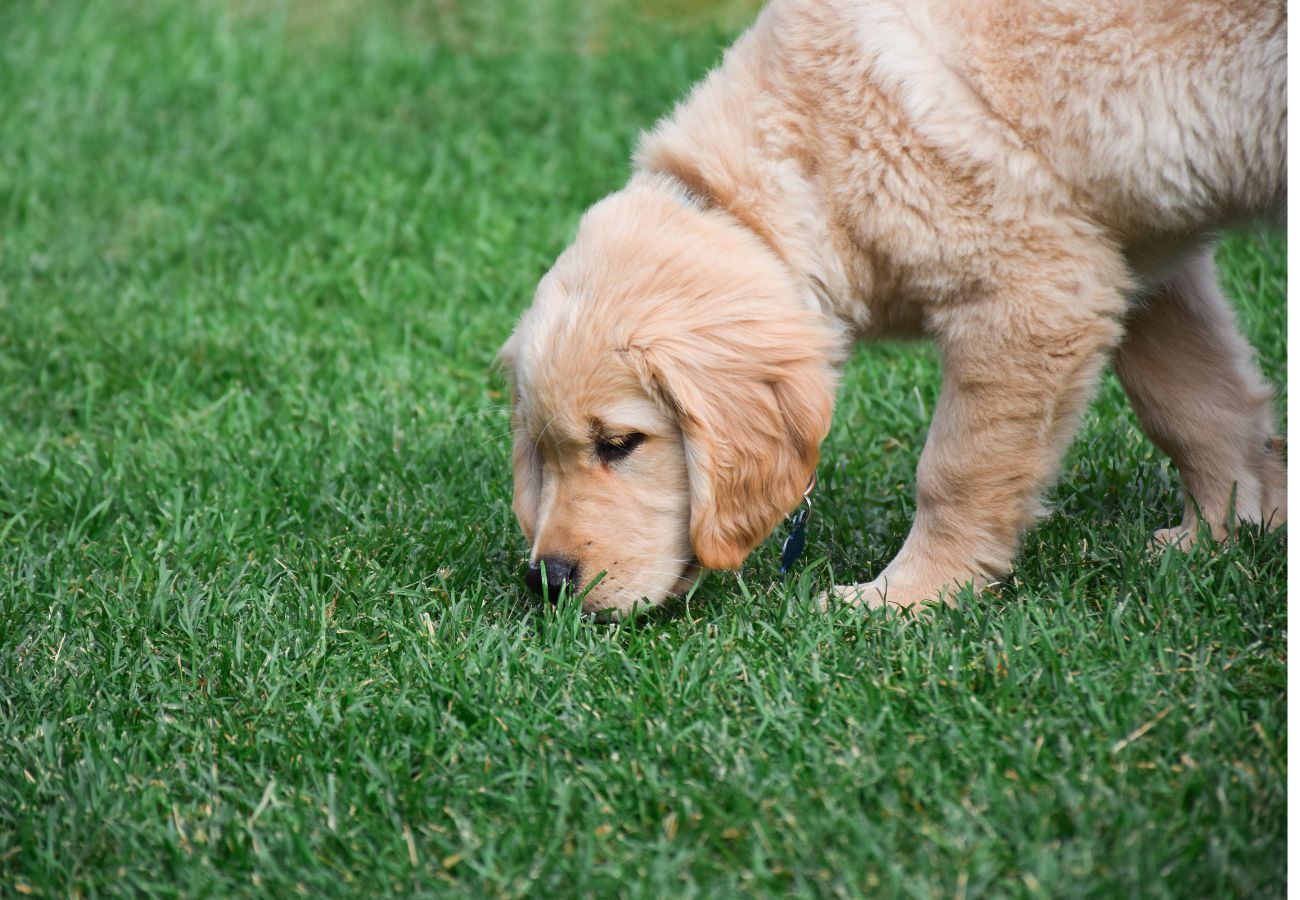
Can dogs do circular breathing?
Several musicians claim ownership of the World record for holding a single note by breathing in and out continuously at the same time – the record is almost 50 minutes! An incredible feat, but did you know our dogs can do a similar thing every time they come across an interesting smell? They breathe in via the main nostrils, and exhale partly by the little slits at the side of the nose which assists recirculating the breath to increase the sensitivity of the odour detection – perhaps not real “circular breathing” like Kenny G, but getting there. Clever dogs!
Your dogs’ nose is truly unique!
A dog’s rhinarium (nose leather) has unique, individual bumps and grooves, and these are as individual to dogs and finger prints are to people. There is even an app where you can register a “nose print” (actually a picture!) and which can assist should your dog go missing or be stolen.
My cat is a mouth-breather….said no cat owner ever!
Dogs prefer to breathe through their noses in general. There are of course exceptions, including those poor dogs who struggle to breathe well via narrow nostrils/airways, but they can choose to mouth breathe if they wish. Cats on the other hand are almost obligate nose-breathers, and any cat breathing through his/her open mouth is likely to be super-stressed or indeed struggling to breathe – mouth-breathing in cats would be a definite urgent call to the vet.
So, in terms of just how much information and help a nose gives a pet, dogs are the outright winners, beating cats in the sensitivity stakes!
We must not forget however that cats are still far more sensitive to strong odours that we can tolerate easily – remember that strong scents can be aversive to cats, so are best avoided indoors.

Disclaimer: This article cannot substitute for treatment decisions based on a full history and clinical examination by your vet.

Meet Veterinary Surgeon Craig:
Craig Reilly BVM&S CertSAM MRCVS Veterinary Surgeon
I love my job. I have been a vet in my home town for most of my 35 year career: a great privilege.
I can remember my first dog so well. She was a wee rescue Labrador who sadly died of Canine Distemper Virus within a few days of us bringing her home from the shelter. I saw more cases of Distemper again when doing charity work in Africa recently, and am so grateful that here most owners are responsible and vaccinate their dogs regularly so we no longer see cases at home.
I qualified with distinction in Medicine from the Dick Vet College, Edinburgh in 1987. In 2002, I was the first vet in Northern Ireland to successfully complete the post-graduate RCVS Certificate of Small Animal Medicine, gaining a deep insight into how an ideal diet positively influences health of our pets, but highlighting the risks some of the fad diets bring.
I have always had pets, growing up and with my own family: I cannot imagine life without these fantastical loyal and loving companions.